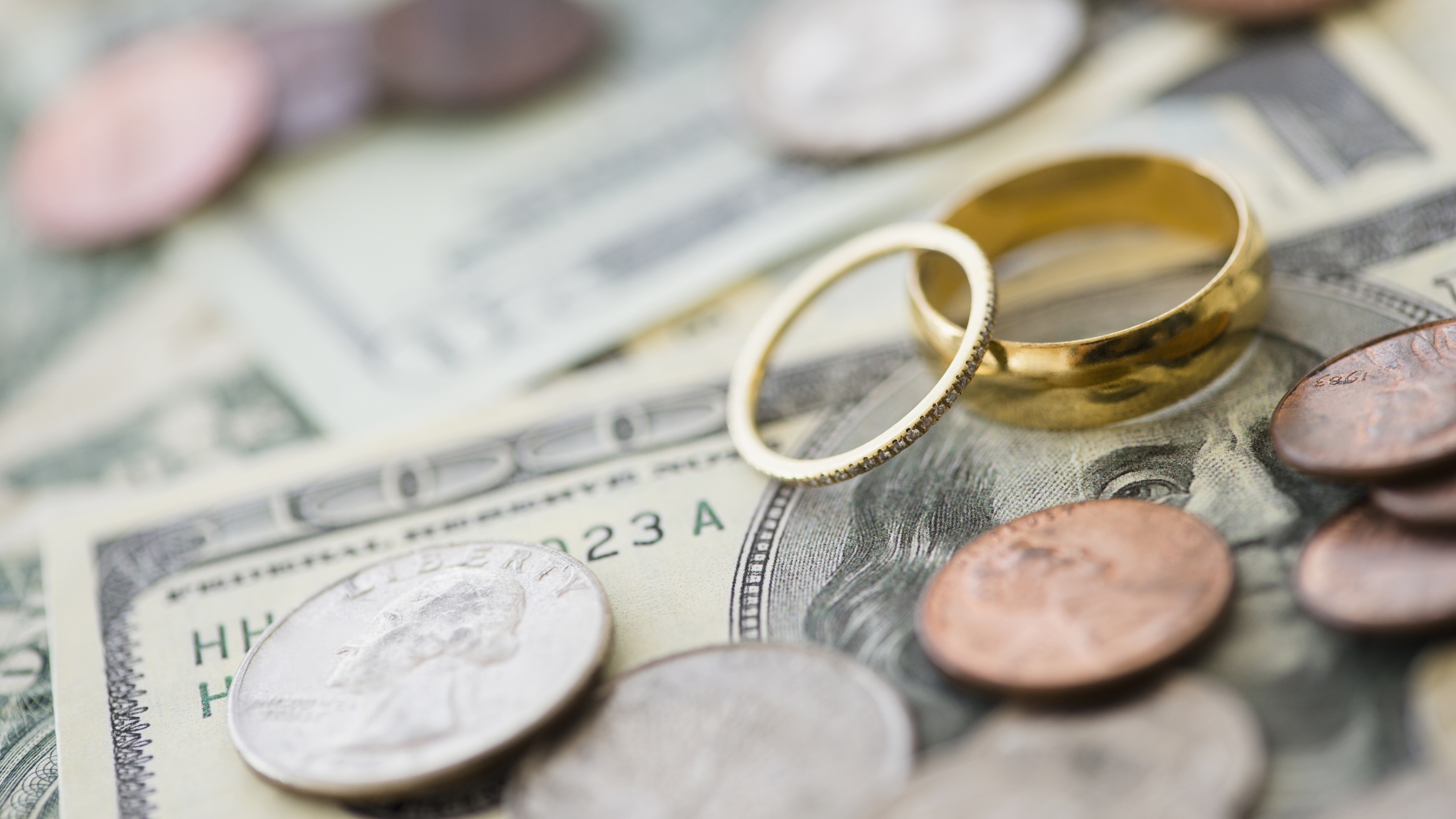How High Interest Rates Enhance a Type of Charitable Trust
Before interest rates are cut, potential donors might want to consider a CRAT, which optimizes benefits for both the donor and the charity when rates are higher.

As we’ve seen, a high interest rate environment can generate financial challenges, such as tighter lending standards and reduced consumer spending. But it may also present certain opportunities for charitably inclined individuals.
Thanks to a formula prescribed by federal tax regulations, a high interest rate environment may enhance the benefits of a certain type of trust, the charitable remainder annuity trust (CRAT), which can benefit a donor’s selected charity in the future while providing a stream of fixed regular payments to the donor in the meantime.
How a CRAT works
Through a CRAT:

Sign up for Kiplinger’s Free E-Newsletters
Profit and prosper with the best of expert advice on investing, taxes, retirement, personal finance and more - straight to your e-mail.
Profit and prosper with the best of expert advice - straight to your e-mail.
- A donor transfers property, ideally appreciated marketable securities held for over a year, to an irrevocable trust.
- The donor's basis in the appreciated assets carries over to the trust, which then sells them without incurring any capital gain as a tax-exempt entity.
- The trust annually pays a fixed-dollar amount to at least one beneficiary, often the donor himself or herself. (The amount must equal at least 5% and no more than 50% of the value of the donated assets at the time of trust funding.)
- These payments (taxable to the annuity recipient) continue for the life of the beneficiaries or a specific term of up to 20 years.
- At the end of the payment term, the remainder of the trust passes to at least one charity, hence the term charitable remainder trust.
- The remainder donated to charity must be meaningful, to reflect a present value of at least 10% of the initial net fair market value of all property transferred to the trust.
CRATs may enable donors to:
- Diversify out of highly concentrated and appreciated securities tax-efficiently by deferring and stretching out (but not avoiding) capital gain taxes on the sale of assets transferred to the trust.
- Receive a predictable annual payment stream for a prescribed period.
- Support charities with the remainder balance, with a corresponding charitable deduction for estate tax purposes for the remainder interest.
- Obtain a current income tax charitable deduction based on the present value of the charitable interest in the trust (subject to further ceilings on the deduction amount based on the donor's adjusted gross income and the type of nonprofit receiving the remainder interest).
Why high interest rates make CRATs attractive
The benefit for CRATs in high interest rate environments lies in the prescribed formula for calculating the value of the charitable remainder interest at the trust's inception. This valuation prevails, regardless of any subsequent increase or decrease in the value of the trust's assets, and governs the deduction amount that the donor would claim in the year of funding the CRAT.
Since both the donor and charity benefit, a CRAT constitutes a “split-interest” trust, as opposed to a wholly charitable trust, which would otherwise reflect a charitable contribution amount of 100% of the assets transferred. For a CRAT, the deduction remains limited to the present value of the charity’s remainder interest at the end of the trust term. This equals the value of the donated property minus the present value of the annuity interest.
Given this equation, the present annuity interest inversely affects the value of remainder interest calculated for charity. The lower the present value of the annuity, the higher the remainder value for the charity. Conversely, the higher the calculated value of the annuity interest, the lower the remainder value deemed for the charity.
An example
For valuing a CRAT annuity interest, instead of a fixed discount rate, the federal tax code prescribes one — the “§7520 rate” — which fluctuates monthly in conjunction with applicable federal rates. As the §7520 rate rises, the annuity value is discounted more and is therefore worth less, making the value of the charitable remainder more. For this reason, a high interest rate environment yields a relatively higher charitable deduction for a CRAT than during a low interest rate period.
Take, for instance, a donor who creates and funds a CRAT with property with a fair market value of $1 million. She will receive a $50,000 annuity for 15 years. At the time of funding the CRAT, the §7520 during that month equaled 2.4%, which resulted in a present value for the annuity of $623,645 and a charitable remainder value of $376,355. By contrast, funding a CRAT with the same property and annuity terms when the §7520 equals 5.6% results in a present value for the annuity of $498,560 and a charitable remainder value of $501,440, thereby giving rise to a relatively higher charitable deduction.* And of course, the higher the charitable deduction, the more that can offset a donor’s federal taxable income, subject to the maximum rate of 37%.
In addition, funding a CRAT during this higher §7520 rate of 5.6% in the example above enables the donor to alternatively consider a CRAT that provides a lifetime annuity, thus potentially receiving annual payments totaling well over the original $1 million donated, assuming a current age of 50, and still provide for a charitable remainder that meets the minimum threshold. (Funding a CRAT and selecting a lifetime annuity during a lower interest rate environment may not yield enough of a charitable remainder to meet tax code requirements).
Another option
As another type of split-interest trust, a charitable remainder unitrust (CRUT) pays the income beneficiary a percentage of the value of the trust each year. As a result, payments can rise and fall with the value of the underlying assets. Given the percentage-based payout, CRUTs are less likely to run out of funds if there is an economic downturn. The payments may decrease, of course, but not to zero.
Calculating the value of a CRUT charitable remainder interest entails computing an “adjusted payout rate” and follows a formula different from that prescribed for CRAT remainder interests. As such, the interest rate has little effect on the valuation of a unitrust interest.
The bottom line
While interest rate environments alone should not determine the suitability of a charitable strategy, (which should also account for the donor’s age and other factors), donors may benefit from understanding why CRATs may appeal more during a period of higher interest rates, thus optimizing potential opportunities as much as possible.
* Generated through Steve Leimberg's NumberCruncher software version 2023.00.
Related Content
- How to Give to Charity and Also Generate Retirement Income
- Would You Benefit From a Split Interest Income Trust?
- Developing a Charitable Giving Strategy: Where to Begin
- How to Assess the Impact of Your Charitable Giving
- What to Do if Your Passion for Charitable Giving Has Flagged
Profit and prosper with the best of Kiplinger's advice on investing, taxes, retirement, personal finance and much more. Delivered daily. Enter your email in the box and click Sign Me Up.

As Head of Philanthropy & Family Governance Advisory, NB Private Wealth, a division of Neuberger Berman, Julia guides family members in proactively navigating their future and philanthropic journey together. Common topics covered with significant families include wealth communication and disclosure, succession planning and post-liquidity governance in determining a new common framework for the family and its wealth. Julia has lectured widely in the areas of philanthropy and family governance, with her perspective featured in The New York Times, Forbes, the Financial Times and Barron’s. Julia has authored articles for Trusts and Estates magazine and the Leimberg Estate Planning Newsletter and regularly speaks on charitable giving.
-
 Callable CDs Have High Rates. We Still Don't Recommend You Get Them
Callable CDs Have High Rates. We Still Don't Recommend You Get ThemInvestors must carefully consider the trade-offs, as falling interest rates could lead to reinvestment at a lower yield and make selling on the secondary market difficult.
-
 High Mortgage Rates Are Holding My Retirement Hostage: Can I Still Downsize and Retire?
High Mortgage Rates Are Holding My Retirement Hostage: Can I Still Downsize and Retire?We ask retirement wealth advisers what to do.
-
 Five Big Beautiful Bill Changes and How Wealthy Retirees Can Benefit
Five Big Beautiful Bill Changes and How Wealthy Retirees Can BenefitHere's how wealthy retirees can plan for the changes in the new tax legislation, including what it means for tax rates, the SALT cap, charitable giving, estate taxes and other deductions and credits.
-
 Portfolio Manager Busts Five Myths About International Investing
Portfolio Manager Busts Five Myths About International InvestingThese common misconceptions lead many investors to overlook international markets, but embracing global diversification can enhance portfolio resilience and unlock long-term growth.
-
 I'm a Financial Planner: Here Are Five Smart Moves for DIY Investors
I'm a Financial Planner: Here Are Five Smart Moves for DIY InvestorsYou'll go further as a DIY investor with a solid game plan. Here are five tips to help you put together a strategy you can rely on over the years to come.
-
 Neglecting Car Maintenance Could Cost You More Than a Repair, Especially in the Summer
Neglecting Car Maintenance Could Cost You More Than a Repair, Especially in the SummerWorn, underinflated tires and other degraded car parts can fail in extreme heat, causing accidents. If your employer is ignoring needed repairs on company cars, there's something employees can do.
-
 'Drivers License': A Wealth Strategist Helps Gen Z Hit the Road
'Drivers License': A Wealth Strategist Helps Gen Z Hit the RoadFrom student loan debt to a changing job market, this generation has some potholes to navigate. But with those challenges come opportunities.
-
 Financial Pros Provide a Beginner's Guide to Building Wealth in 10 Years
Financial Pros Provide a Beginner's Guide to Building Wealth in 10 YearsBuilding wealth over 10 years requires understanding your current financial situation, budgeting effectively, eliminating high-interest debt and increasing both your income and financial literacy.
-
 You're Divorced, But the Work Isn't Over: A Guide to Five Financial Tasks to Do ASAP
You're Divorced, But the Work Isn't Over: A Guide to Five Financial Tasks to Do ASAPOnce your divorce is settled, don't waste time. You've got to tie up some important loose ends or risk losing money and facing tax consequences.
-
 Five Mistakes to Avoid in Your First Year of Retirement
Five Mistakes to Avoid in Your First Year of RetirementRetirement brings the freedom to choose how to spend your money and time. But choices made in the initial rush of excitement could create problems in the future.
